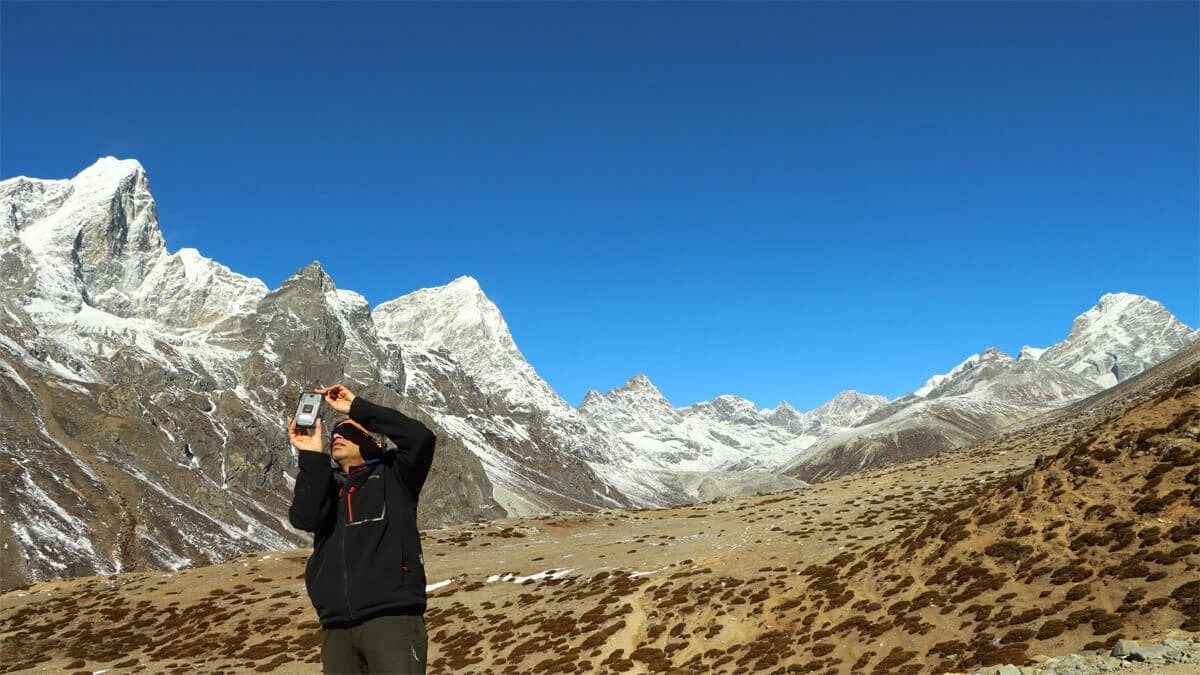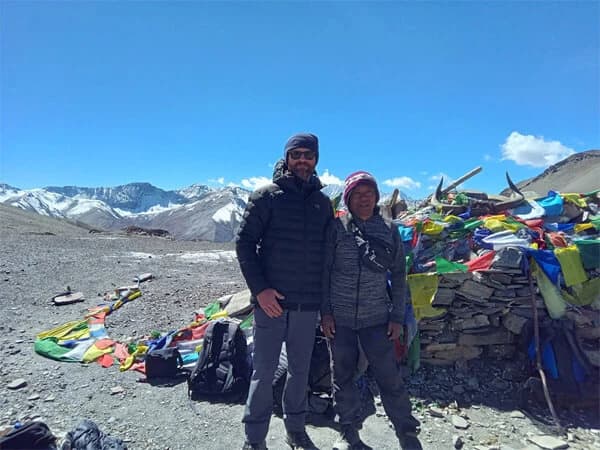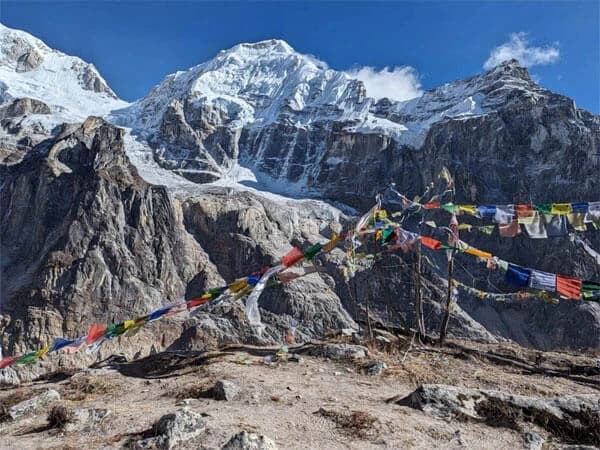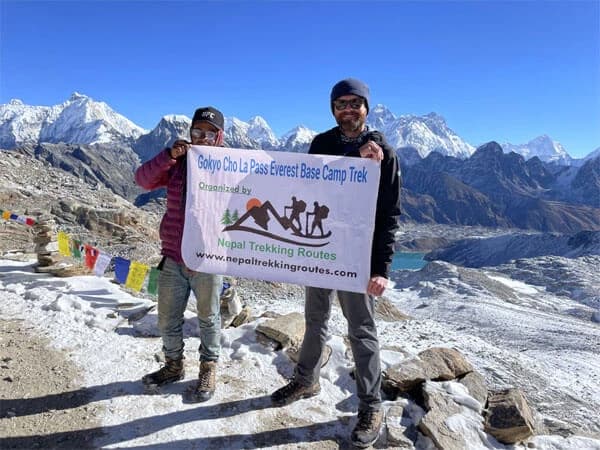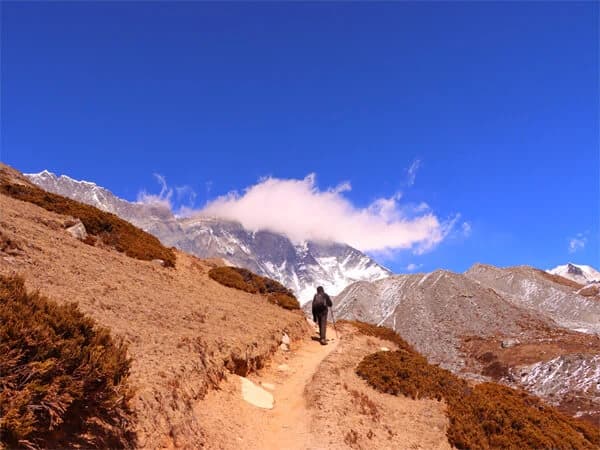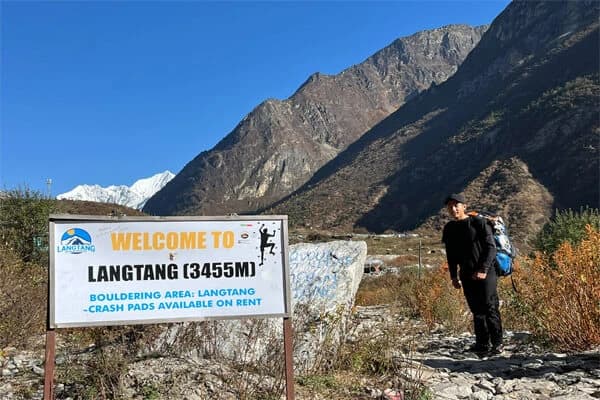Nepal Trekking Routes ensures that you are well-prepared with the right guidance, acclimatization plan, and logistical support. Whether you are trekking solo or with a group, proper preparation is key to successfully crossing the three high passes.
The standard Everest Base Camp trek involves trekking to a single destination and returning the same way. Whereas, the Three Passes Trek is a loop that takes you through the entire Khumbu Valley, crossing the major mountain passes along the way.
Nepal Trekking Routes ensures that you are well-equipped for the journey by providing expert guidance, acclimatization support, and logistical arrangements. With our team, you can focus on the experience rather than the logistics.
Everything you need to know about the Everest Three High Passes Trek
The Everest Three High Passes Trekis one of the most adventurous and rewarding trekking routes in the Himalayas. It takes you across three high-altitude passes Kongma La, Cho La and Renjo La. Unlike the classic Everest Base Camp trek, this route offers a more challenging and immersive experience. It is a journey that tests your endurance, determination, and ability to adapt to extreme altitudes. It is one of the favorite adventures among seasoned trekkers.
For those looking to push their limits, this trek provides an unparalleled opportunity. You will explore the less-traveled paths of the Everest region. The Everest Three Passes Trek is not just about reaching Everest Base Camp, it’s about experiencing the grandeur of the Khumbu region from multiple vantage points. You will walk through the remote valleys and witness some of the most breathtaking Himalayan landscapes. The trek also introduces you to the rich Sherpa culture, Buddhist monasteries, and high-altitude settlements that have thrived in these mountains.
Why it’s considered one of the most challenging and rewarding treks in Nepal.
While physically demanding, the trek is incredibly rewarding. It offers views of four of the world’s highest peaks including Everest (8,848m), Lhotse (8,516m), Makalu (8,485m), and Cho Oyu (8,188m). You can also view other numerous snow-clad peaks, glaciers, and pristine alpine lakes. Along the way, you will visit iconic destinations like Gokyo Lakes, Kala Patthar, Everest Base Camp, and Tengboche Monastery.
Nepal Trekking Routes ensures that you are well-prepared with the right guidance, acclimatization plan, and logistical support. Whether you are trekking solo or with a group, proper preparation is key to successfully crossing the three high passes.
Who should consider this trek?
The Everest Three High Passes Trek is best suited for experienced trekkers who are comfortable with long hiking days, steep ascents, and rugged trails. The trek involves crossing three passes above 5,300m. It requires a high level of fitness, endurance, and mental determination. Unlike the classic Everest Base Camp Trek with a direct route, the Three Passes Trek is a circular loop. It allows trekkers to experience more remote and untouched parts of the Khumbu region.

The Everest Three High Passes Trek is the ultimate challenge for those seeking a true Himalayan adventure. It is a test of resilience, an opportunity for personal growth, and a chance to witness the majesty of the Himalayas.
What is the Everest Three High Passes Trek?
The Everest Three High Passes Trek is a circuit trek in the Everest region. It connects some of the highest and most scenic trekking routes in Nepal. It is a more extreme alternative to the traditional Everest Base Camp trek. This trek is designed for adventurers who want to experience the Himalayas at their most rugged and remote.
The standard Everest Base Camp trek involves trekking to a single destination and returning the same way. Whereas, the Three Passes Trek is a loop that takes you through the entire Khumbu Valley, crossing the major mountain passes along the way. Each pass presents a unique challenge, offering varying levels of difficulty, weather conditions, and terrain.
The Three High Passes are:
- Kongma La Pass (5,535m): Kongma La is the highest of the three passes, connecting Chhukung and Lobuche. The steep ascent and rocky trail require careful navigation. You can experience high winds and cold temperatures at the summit. The rewards of crossing this pass are unmatched views of Lhotse, Makalu, and Ama Dablam towering above the rugged landscape.
- Cho La Pass (5,420m): Cho La connects Lobuche with the stunning Gokyo Valley. This pass is one of the most technical sections of the trek as it requires traversing a glacier. You will need crampons or microspikes to cross the icy sections safely. The descent into the Gokyo Valley is one of the most beautiful parts of the journey.
- Renjo La Pass (5,360m): Renjo La is considered the most beautiful of the three passes. It offers panoramic views of Everest, Gokyo Lakes, and Cho Oyu. The descent from Renjo La takes you through remote valleys. It offers a sense of solitude away from the crowded Everest Base Camp route.
Why Choose the Everest Three High Passes Trek?
The Everest Three High Passes not only reaches the Everest Base Camp but also goes through the vast and remote corners of the Khumbu region. It is designed for those who want to see more than just Everest and crave a deeper connection with the Himalayas. Here are the reasons why you should choose this trek:
A more Challenging and Rewarding Trek
Unlike the Everest Base Camp Trek, the Three High Passes route demands greater physical endurance. Each pass involves steep ascents, glacier crossings, and high-altitude trekking. It is an adventure perfect for seasoned hikers.
Unparalleled Mountain Views
The trek offers panoramic views of Everest, Lhotse, Makalu, Cho Oyu, and Ama Dablam from multiple angles. Each pass provides a unique perspective, making the trek incredibly diverse in scenery.
Less Crowded, More Remote
While the Everest Base Camp trail can be crowded, the Three Passes Trek takes you through more secluded areas. Places like Thame, Lungden, and Chhukung offer a quieter, more immersive Himalayan experience.
Cultural and Spiritual Insights
The trek passes through several Sherpa villages, monasteries, and sacred sites. You can experience traditional Buddhist culture, prayer wheels, and Mani stones along the way. A visit to Tengboche Monastery adds a deep cultural aspect to the trek as it is one of the most important spiritual centers in the region.
A Complete Everest Experience

In addition to Everest Base Camp, you will visit Kala Patthar and the stunning Gokyo Lakes. The trek covers glaciers, alpine lakes, remote valleys, and high passes, making it the most comprehensive Everest trek.
Embarking on a trek as demanding as the Everest Three High Passes Trek requires careful planning and preparation. Nepal Trekking Routes ensures that you are well-equipped for the journey by providing expert guidance, acclimatization support, and logistical arrangements. With our team, you can focus on the experience rather than the logistics.
Everest Trekking Route and Itinerary
The Everest Three High Passes Trek is an ultimate adventure that spans across 19 days. You will have an immersive experience in the heart of the Himalayas.
Nepal Trekking Routes offers 19 day itinerary depending on your fitness level and preference. It can also be customized for a shorter or longer version. If you have limited time, the itinerary can be shortened by skipping few stops. Whereas, you can spend a longer time taking additional rest days and side trips.
Here is the day by day breakdown of the trek:
- Arrival in Kathmandu: Your adventure begins in Kathmandu, Nepal’s vibrant capital. Upon your arrival at Tribhuvan international Ariport, you will check into your hotel. Later, you will meet your trekking guide, and prepare for the trek. This is also the time to double-check your gear, obtain last-minute supplies, and explore Thamel.
- Flight to Lukla and Trek to Phakding: The day starts with a scenic flight to Lukla, the gateway to Everest. The flight offers aerial views of the Himalayas before landing on Tenzing-Hillary Airport. From Lukla, the trek begins with a gentle descent through pine forests and traditional Sherpa villages. The trail follows the Dudh Koshi River passing through Chaurikharka and Ghat. Finally, you will reach Phakding after 3-4 hours of walking. Phakding is a peaceful village where you will spend your first night in a teahouse.
- Trek to Namche Bazaar: This is one of the most exciting days, as you enter Sagarmatha National Park and ascend towards the famous Namche Bazaar. The trail crosses suspension bridges, including the iconic Hillary Suspension Bridge, before a steep climb to Namche. Namche is the largest Sherpa town and a major stop on the Everest route. Here, you will find bakeries, trekking shops, and stunning views of Thamserku and Kongde Ri.
- Acclimatization Day at Namche Bazaar: Acclimatization is key for high-altitude trekking, and Namche offers several great day hikes. You can visit the Everest View Hotel for stunning views of Everest, Lhotse, and Ama Dablam, or explore the Sherpa Museum and local monasteries. Spending an extra day at Namche allows your body to adjust to the altitude. This makes the upcoming climbs safer and more enjoyable.
- Trek to Tengboche: You will continue your trek from Namche through rhododendron forests and yak pastures. You will enjoy the breathtaking mountain views on the way to Tengboche Monastery. It is the most significant Buddhist monastery in the region. From here, you get panoramic views of Everest, Ama Dablam, Nuptse, and Lhotse.
- Trek to Dingboche: The trek descends to Dingboche, crosses the Imja River, and climbs through alpine meadows. Finally, you will reach Dingboche, a picturesque village surrounded by barley fields and stone walls.
- Acclimatization Day at Dingboche: Dingboche is a crucial acclimatization stop before tackling Kongma La Pass, the first of the three high passes. A rest day doesn’t mean staying idle! To aid acclimatization, a short hike to Nagarjun Hill is recommended. This vantage point provides mesmerizing views of Makalu, Lhotse, and Island Peak.
- Trek to Chhukkung: From Dingboche, you will resume your journey. The trail ascends through the stone-walled fields nearby the Imja Khola banks. You will enjoy the stunning views of Ama Dablam and Ambu Laptsa peaks. After 4 hours of walking, you will reach Chhukkung village, popular for Chhukkung Ri.
- Trek to Lobuche via Kongma La Pass: This is the most demanding day so far, as you tackle Kongma La Pass, the highest of the three. The ascent is steep, with loose rocks and glacial moraines, but the panoramic views at the top are worth every step. Descending to Lobuche, you will follow the Khumbu Glacier.
- Trek to Gorakshep and Hike to Everest Base Camp: You will follow the steep trail then walk along the Khumbu Glacier to reach Gorakshep. From there, you will hike to Everest Base Camp. After soaking in the moment, you will return to Gorakshep, a small settlement at high altitude.
- Hike to Kala Patthar and Trek to Dzongla: For the best sunrise over Everest, you will hike to Kala Patthar in the early morning. After this breathtaking moment, the trail descends to Dzongla. You will prepare for the next high pass.
- Trek to Thangna via Cho La Pass: Cho La Pass is a technical crossing with steep sections and an icy glacier. After crossing Cho La, you will descend towards Thangna. From there, you will have amazing view of Machhermo Peak and surrounding peaks.
- Trek to Gokyo Lakes: You will start by ascending through the picturesque villages of Nha and Machermo. The trail offers breathtaking views of the surrounding peaks, including Cho Oyu. A short trek brings you to the turquoise Gokyo Lakes, a hidden gem of the Everest region.
- Acclimatization Day: An acclimatization day at Gokyo Lakes involves a leisurely hike to Gokyo Ri. Gokyo Ri offers jaw-dropping views of Everest, Cho Oyu, and the surrounding peaks. You can also explore the serene turquoise lakes, visit nearby villages, and relax while enjoying the stunning scenery to help your body to adjust to the altitude.
- Trek to Marlung via Renjo La Pass: The final high pass, Renjo La offers some of the most stunning landscapes of the trek. After crossing Renjo La, you will descend towards Marlung. The trail is scenic passing through yak pastures and remote Sherpa settlements.
- Trek to Namche Bazaar: A long descend through Thame leads back to Namche Bazaar. Here, you can finally enjoy a warm shower and a bakery treat.
- Trek to Lukla: The final trekking day retraces your steps to Lukla, marking the end of an extraordinary adventure.
- Return flight to Kathmandu: A short flight returns you to Kathmandu, where you can relax, shop for souvenirs, or explore historical sites.
- Final Departure or Another trip: Finally, you will have a sense of accomplishment by completing the Everest Three High Passes Trek. You can either take another trip offered by Nepal Trekking Routes or fly back to your country.
Best Time to do the Trek
The Everest Three High Passes Trek is one of the most challenging and rewarding treks in the Nepal Trekking scene. Choosing the right season is crucial for a successful and enjoyable experience.
- Spring (March-May): Spring is one of the best times for the Three Passes Trek. The weather is stable and the temperatures are relatively mild, making it ideal for trekking. One of the highlights of trekking during spring is the rhododendron bloom, which covers the lower hills in shades of red, pink, and white. Visibility is excellent, allowing trekkers to enjoy stunning views of Everest, Lhotse, Makalu, and Cho Oyu. The moderate daytime temperatures make for comfortable hiking, while nighttime temperatures at higher elevations can drop to freezing level.
- Autumn (September-November): Another peak season for the trek is autumn. This season offers the best visibility with crisp, clear skies. After the monsoon, the dust and haze settle, providing breathtaking mountain panoramas. The temperatures are similar to those in spring. Due to the popularity, you can expect some crowded trails around Everest Base Camp and Namche Bazaar.
- Winter (December-February): For trekkers who enjoy solitude and can withstand extreme cold, winter can be rewarding time. The trails are quieter and the mountains look magnificent under a thick layer of snow. The temperatures at higher altitudes can drop below freezing level. Snowfall can block the high passes, making the trek much more challenging. Proper gear and experience in cold-weather trekking are essential.
- Summer/Monsoon (June-August): Summer coincides with monsoon season. It is the least favorable time to trek due to heavy rains, muddy trails, and the risk of landslides in lower regions. However, this season brings lush greenery, and the Khumbu Valley appears vibrant. The higher altitudes receive less rainfall, so some trekkers still take on the challenge. Those who trek during the monsoon should be prepared for unpredictable weather and limited visibility.
Difficulty Level and Physical Preparation

The Everest Three High Passes Trek is one of the most difficult trekking routes in Nepal. Unlike the direct route of Everest Base Camp Trek, this trek crosses three high-altitude mountain passes. Each pass involves steep ascents, technical descents, and long hiking hours. This trek is more suitable for experienced trekkers.
Why is it so difficult?
- High Altitude: The trek reaches over 5,500m multiple times, increasing the risk of altitude sickness. Proper acclimatization is necessary.
- Long Trekking Hours: Most days require 6-8 hours of trekking, with some days stretching to 10 hours during high pass crossings.
- Technical Sections: Some parts of the trail, especially Cho La Pass, involve walking on glaciers and crossing rocky terrains. A basic understanding of crampons and trekking poles can be beneficial.
- Remote and Demanding Conditions: Unlike the standard Everest route, this trek ventures into more remote areas. There are fewer teahouses and longer distances between settlements.
Preparing for Trek
- Cardiovascular Training: Activities like running, cycling, and swimming help improve stamina for long trekking days.
- Strength Training: Leg and core workouts, including squats, lunges, planks, and step-ups, prepare the body for steep ascents and descents.
- Altitude Acclimatization: If possible, trekking at high elevations before the trek helps condition the body.
- Hiking Experience: Prior trekking experience, preferably at altitudes above 4,000m, is highly recommended.
Highlights of the Three High Passes Trek
The Everest Three High Passes Trek is considered the ultimate trekking adventure in Nepal offering unmatched scenery, diverse landscapes, and an immersive Himalayan experience.
Crossing the Three High Passes
The three passes, Kongma La, Cho La, and Renjo La, are the biggest highlights of this trek. Each pass offers a unique perspective of the Khumbu region. The stunning views of Everest, Lhotse, Makalu, and Cho Oyu are unmatched. The thrill of crossing these high-altitude passes makes this trek truly special.
Please go through this blog Ultimate Guide to Everest Three High Passes Trek
Gokyo Lakes and Ngozumpa Glacier
The Gokyo Lakes are among the highest freshwater lakes in the world. The turquoise waters contrast beautifully with the snow-covered peaks. The Ngozumpa Glacier, the longest Glacier in Nepal, is another mesmerizing sight along the route.
Everest Base Camp and Kala Patthar
Despite the challenge of the high passes, trekkers also visit Everest Base Camp (5,364m) and Kala Patthar (5,545m) for close-up views of Everest. The sunrise from Kala Patthar is one of the most iconic experiences in Nepal trekking.
Culture, People, and Sherpa Lifestyle
The Everest region is home to the legendary Sherpa people, who have lived in the Himalayas for centuries. Their deep-rooted culture, Buddhist traditions, and mountaineering skills make this trek a cultural as well as an adventure journey.
Sherpa Villages and Monasteries
Trekking through Namche Bazaar, Tengboche, Dingboche, and Thame, you will witness traditional Sherpa settlements. The Tengboche Monastery is the largest in the Khumbu region. It is a spiritual center where you can observe Buddhist ceremonies.
Festivals and Traditions
If trekking in autumn, you may witness Mani Rimdu. It is the biggest Buddhist festival in the Everest region, celebrated with masked dances, rituals, and prayers.
Food and Accommodation
Despite being one of the most remote treks in Nepal, the Everest Three High Passes Trek offers a variety of food and accommodation options.
Food
Teahouses along the trail serve Nepali and Tibetan cuisine, with some Western options. The staple meal is Dal Bhat which provides energy throughout the trek. Other popular dishes include momos, Sherpa stew, Tibetan bread with honey, Pasta, pancakes, and fried rice.
Accommodation
You can stay in teahouses which offer simple but comfortable rooms. Most rooms have twin beds with blankets, but heating is minimal. Facilities like WiFi, hot showers, and charging are available for an additional cost.
Packing List and Essential Gear
During the Everest Three High Passes Trek, you will be trekking through extreme altitudes, crossing glaciers, and dealing with unpredictable weather. It requires careful planning while packing for the trek. You will need high-altitude trekking gear suitable for sub-zero temperatures and rugged terrain. Here is a packing list to ensure a comfortable and safe journey:
Clothing
- Base Layers: Moisture-wicking thermal tops and bottoms for insulation.
- Mid Layers: Fleece jackets and trekking pants to retain warmth.
- Outer shell: A windproof and waterproof jacket and pants to protect against snow and strong winds.
- Down Jacket: A thick down jacket is essential for freezing temperatures, especially when crossing high passes.
- Trekking Pants and Shirts: Lightweight and breathable materials for lower altitudes.
- Gloves: A pair of inner gloves and insulated waterproof gloves.
- Hats: A woolen hat for cold weather and a sun cap for lower elevations.
- Neck Gaiter or Buff: Useful against wind, dust, and cold.
Trekking Gear
- Trekking Boots: Sturdy, waterproof boots with ankle support.
- Trekking Poles: Helps with balance, especially on steep ascents and descents.
- Sleeping Bag: a four-season sleeping bag rated for at least -15°C.
- Backpack: A 40-50L backpack for daily essentials.
- Headlamp: Essential for early morning starts and navigating in the dark.
- Sunglasses: UV protection to prevent snow blindness.
- Gaiters: Useful in snow-covered areas.
Miscellaneous Items
- Water Bottles and Purification Tablets: Safe Drinking water is crucial.
- Toiletries: Personal items like sunscreen, lip balm, toothbrush, toothpaste, wet wipes, etc.
- First Aid kit: Includes altitude sickness medication, bandages, and pain relievers.
- Snacks and Energy Bars: For extra energy during long trekking days.
Permits and Costs
For the Everest Three High Passes Trek, you will need Sagarmatha national Park entry permit and Khumbu Rural Municipality entry permit. Nepal Trekking Routes offers the trek package at $2050 which includes permit fees, flights, accommodation, meals and guide services. Before starting your trek, ensure you obtain the following permits:
Sagarmatha National Park Entry Permit:
This permit is required for entering the Everest region. It costs $25 per person. It can be obtained from Kathmandu or Monjo checkpoint near Namche Bazaar.
Khumbu Pasang Lhamu Rural Municipality Permit
This permit was introduced in place of TIMS card. It costs $15 per person. It can be obtained from Lukla or Monjo.
Cost Breakdown for the Trek
Transportation:
- Flights to Lukla: $200 - $226 (one-way from Kathmandu)
Food and Accommodation
- Meals: $5-$12 per meal
- Accommodation: $5-$15 per night in teahouses
Guide and Porter
- Guide: $25 - $35
- Porter: $15 - $25
On average, the total cost of the Everest Three High Passes Trek ranges from $1,500 - $2,500, depending on the level of comfort and services chosen.
The cost of the trek varies according to the type of package you choose:
- Basic Package: Around $1,500 including basic accommodation in teahouses, simple meals, and a guide.
- Medium Package: Ranges from $2,000 to $2,500 offer better lodge options, more meal choices, and a qualified guide.
- Luxury Package: Exceeds $3,000 including premium lodges, private guide service, extended hot shower facilities, and additional comforts.
Hiring a Guide or Going Independent
The Everest Three High Passes Trek is quite challenging, so a guide and porter are highly recommended. Here’s a comparison of the two options:
Trekking independently

Trekking the Everest Three High Passes independently is a challenging yet rewarding adventure. You should have extensive trekking experience, physical fitness, and necessary permits. Carry a detailed map, GPS, and essential supplies. Be prepared for high-altitude conditions and unpredictable weather, prioritizing safety and acclimatization throughout the journey.
The benefits of trekking independently are lower cost, complete flexibility, and a sense of adventure. The drawbacks are navigational challenges, the risk of altitude sickness, and a lack of emergency assistance. It is not recommended unless you have previous high-altitude trekking experience.
Hiring a Guide and Porter
Trekking the Everest Three High Passes with a guide and porter provides added safety and convenience. The guide ensures route accuracy, helps with acclimatization, and shares local insights. A porter carries your heavier gear, allowing you to focus on the trek. The support enhances the overall experience and reduces physical strain.
The benefits of hiring a guide and porter are increased safety, better acclimatization planning, cultural insights, and lighter backpack weight. It may be costly but worth the investment.
Challenges and Precautions
The Everest Three High Passes Trek is physically demanding and requires mental resilience. Here are the main challenges and how to overcome them:
High Altitude and Acclimatization
The trek reaches altitudes over 5,500m, increasing the risk of Acute Mountain Sickness (AMS). The symptoms of AMS are headaches, nausea, dizziness, and breathlessness. You should follow the “climb high, sleep low” rule and take acclimatization days in Namche Bazaar and Dingboche.
Weather Conditions
The sudden weather changes can lead to heavy snowfall, strong winds, and freezing temperatures. You should check the forecast and carry appropriate gear.
Physical Endurance
The trek involves long walking days and steep ascents and descents. We should train at least 2-3 months in advance with cardio exercises, strength training, and endurance hikes.
Remote and Challenging Terrain
Unlike the well-trodden Annapurna Base Camp Trek, the three high Passes route is more isolated. You should carry extra supplies, as fewer villages have medical facilities or rescue services.
Emergency Evacuation and Insurance
You should get travel insurance covering helicopter evacuation in case of severe altitude sickness or inquiry. Helicopter rescues cost between $3,000 and $5,000, so insurance is a must.
Conclusion
The Everest Three High Passes Trek is the ultimate adventure for those seeking a challenge beyond the classic Everest Base Camp route. It tests your physical limits, rewards you with unmatched panoramic views, and immerses you in the rich Sherpa culture. From conquering Kongma La, Cho La, and Renjo La Passes to witnessing the stunning Gokyo Lakes and standing at Everest Base Camp.
While it demands rigorous preparation, proper gear, and strong determination, the rewards are beyond imagination. This trek is meant for seasoned trekkers ready to push their limits. However, if you are a beginner looking for a moderately challenging trek then Annapurna Base Camp Trek is the right choice.
Whether you choose to trek solo or with a guide, being well-prepared will ensure a successful and safe journey. Plan your trek with a reputable agency like Nepal Trekking Routes for a thrilling Himalayan adventure. Our professional guides and support staff provide exceptional service and a seamless trekking experience. The Everest Three High Passes Trek is the perfect choice that offers breathtaking landscapes, cultural encounters, and ultimate trekking challenges.

